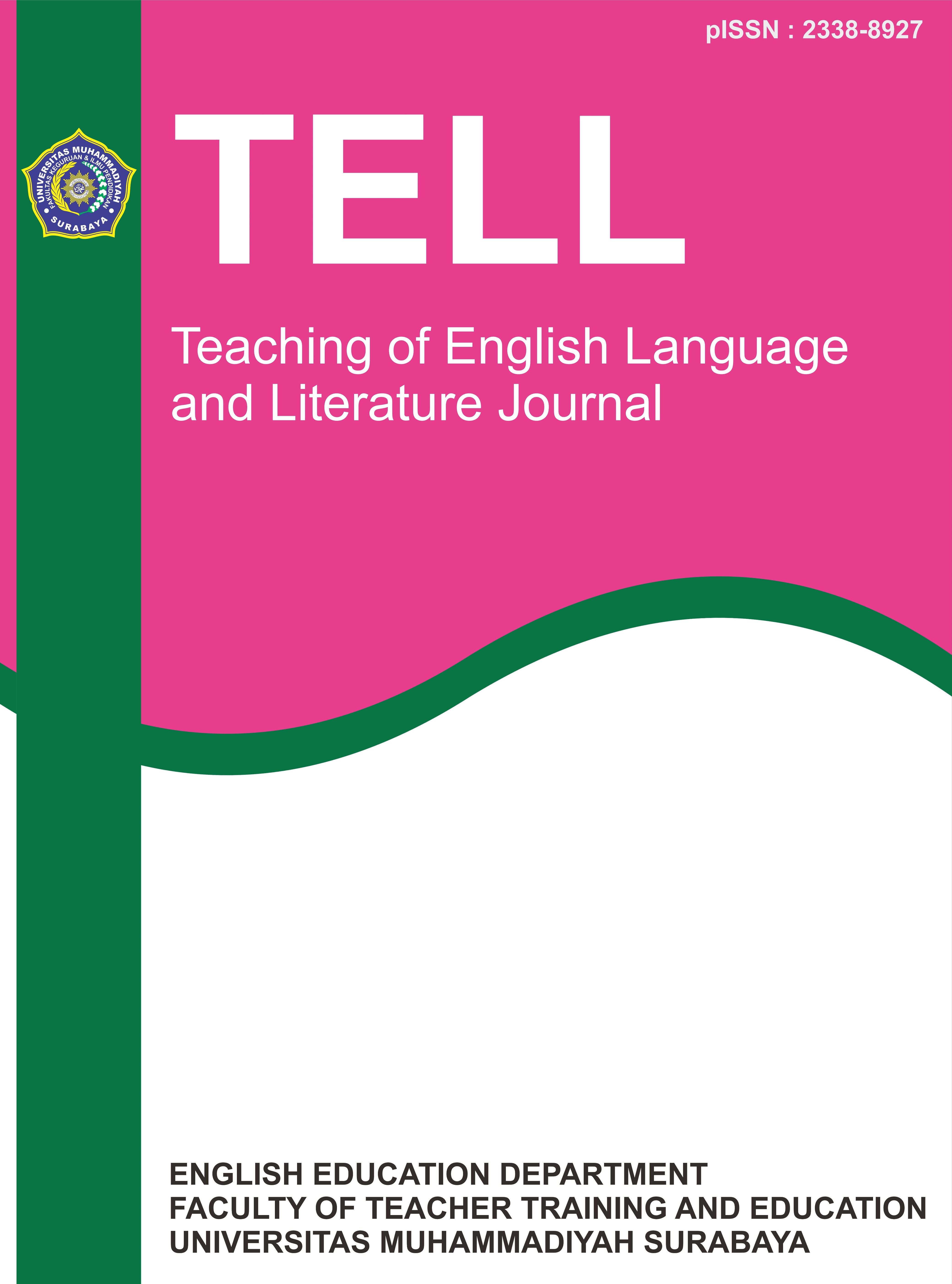Janice Rodway’s Ideal Romance in Hero (Chirstian Grey) and Heroine (Anastasia Steel): An Analysis of Fifty Shades of Grey by E.L James
Abstract
Christian Grey and Anastasia Steel are the main character in trilogy of Fifty Shade by E.L James. This novel is one of the best popular literatures in 21st century. This study focuses on analyzing both main characters by using ideal romance by Janice roadway which is portrayed in first trilogy of Fifty Shades. There are some terms in ideal romance; two of them are the ideal of hero and the ideal of heroin. This study focuses to look deeper into character of Christian grey as the hero and Anastasia steel as the heroin.  This study also discusses about their sexual behavior and relation as part of romance popular literature today. This study is using textual analysis approach and genre analysis theory to analyze the problem. Whether Christian Grey and Anastasia Steel has all the ideal categories of hero and heroine which is based on Roadway’s ideal romance. However, there are some pro and cons in the result of discussing about the main characters depicted in Fifty Shades of Grey.
Full text article
References
Bressler, Charles E. (2002) Literary Criticism – An introduction to Theory and Practice. New Jersey: Prentice Hall.
Cawelty, J.G. (1976). Adventure, Mystery, and Romance: Formula Stories as Art and Popular Culture. Chicago: University of Chicago Press.
Flood, Alison. “Fifty Shades of Grey is really a self-help book, says academicâ€. 20 August 2014. Web. 3 December 2015. http://www.theguardian.com/books/2012/jul/06/fifty-shades-of-grey-is-really-a-self-help-book-says-academic.
Hall, Stuart. (1997). Representation: Cultural Representations and Signifying Practices. London: Sage Publication.
http://www.goodreads.com/book/show/13584236-fifty-shades-trilogy
James, E. L. (2011). Fifty Shades of Grey. New York: The Writer’s Coffee Shop.
Radway, Janice A. (1991). Reading the Romance: Woman, Patriarchy, and Popular Literature. Chapel Hill and London: The University of North California Press.
Sandika, Edria and Marliza Yeni. Construction of Gender and Social Class as Found in The Novel Fifty Shades of Grey by E.L James. Padang, Indonesia: Andalas University
Selden, Raman, Peter Widdowson, Peter Brooker. (2005). A Reader’s Guideto Contemporary – Literature Theory. Edinburgh: Pearson Longman.
Storey, John. Cultural Theory and Popular Culture: An Introduction (5eds). England: Pearson Longman.
Tyson, Lois. (2006). Critical Theory Today. New York: Routledge.
William, Zoe. “Why women love Fifty Shades of Greyâ€. 21 May 2014. Web. 3 December 2015. http://www.theguardian.com/books/2012/jul/06/why-women-love-fifty-shades-grey.
Vinberg, Kristina. (2012). Fairy Tale Narratives & Notions of Gender in Stephenie Meyer’s Twilight Saga and E.L James’ Fifty Shades Trilogy. Sweden: Lund University.
Authors
Copyright (c) 2019 Tell : Teaching of English Language and Literature Journal

This work is licensed under a Creative Commons Attribution-NonCommercial 4.0 International License.
Authors keep the copyright to their work. However, by publishing in this journal, they grant the journal the right to publish it first.
The published article is licensed under a Creative Commons Attribution-NonCommercial 4.0 License .
This means others can use, share, and adapt the work for non-commercial purposes, as long as they credit the author and the journal.
Authors can share the published article elsewhere (for example, in a university repository or in a book), as long as they clearly state that the article was first published in this journal.
Authors are encouraged to share early versions of their work (such as preprints) on their personal websites or institutional repositories, even before or during the submission process, as it can lead to productive exchanges, as well as earlier and greater citation of published work.

